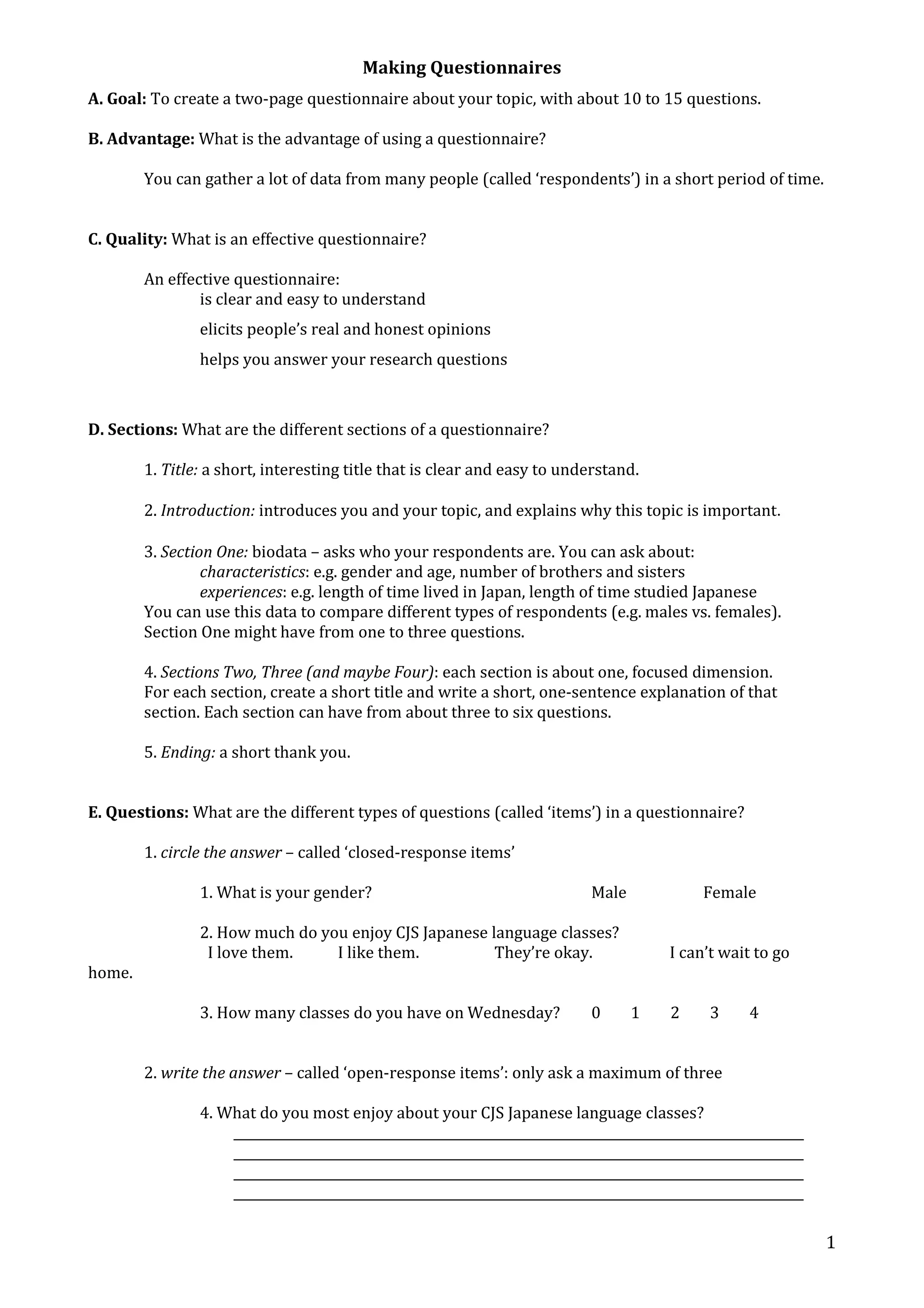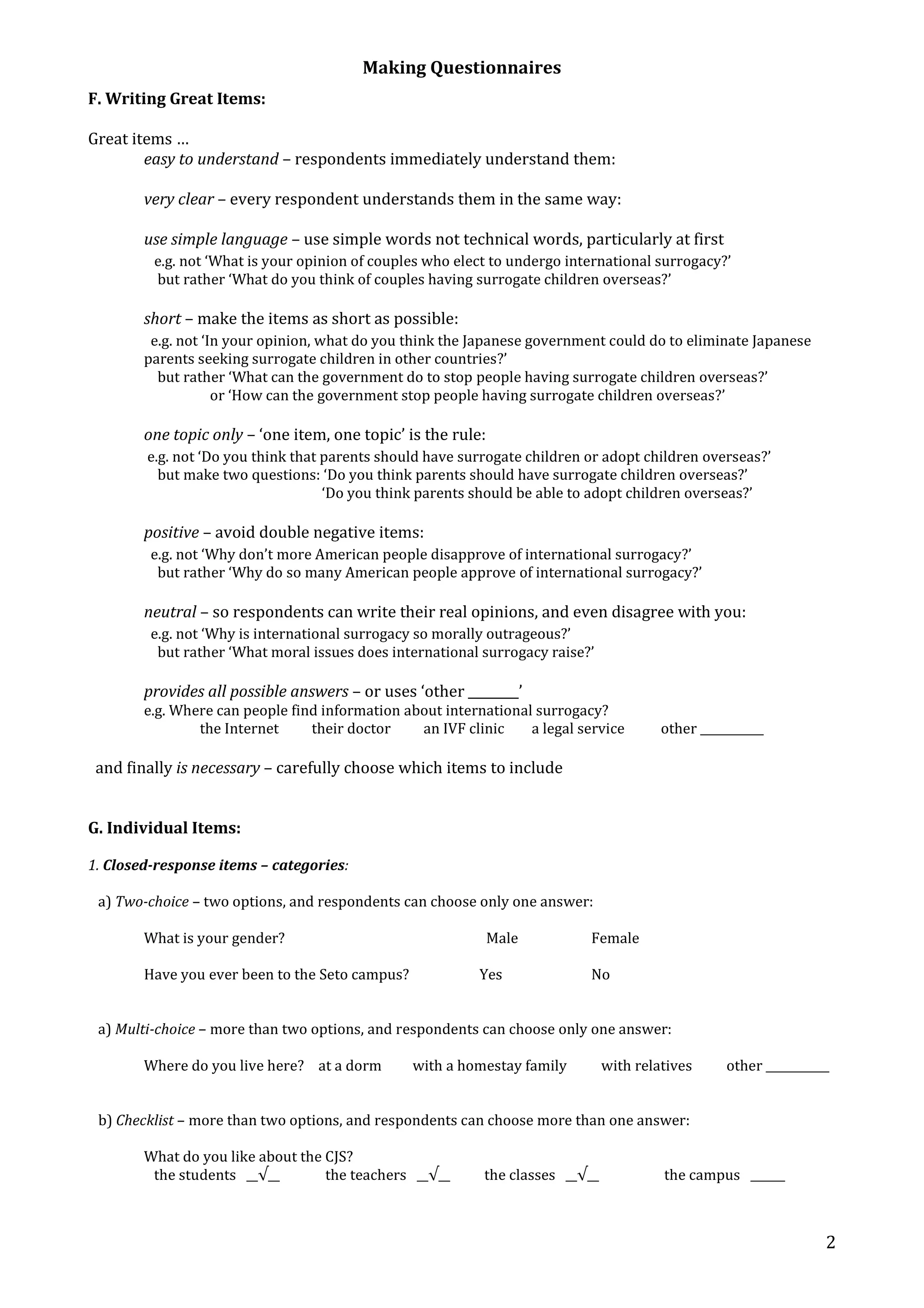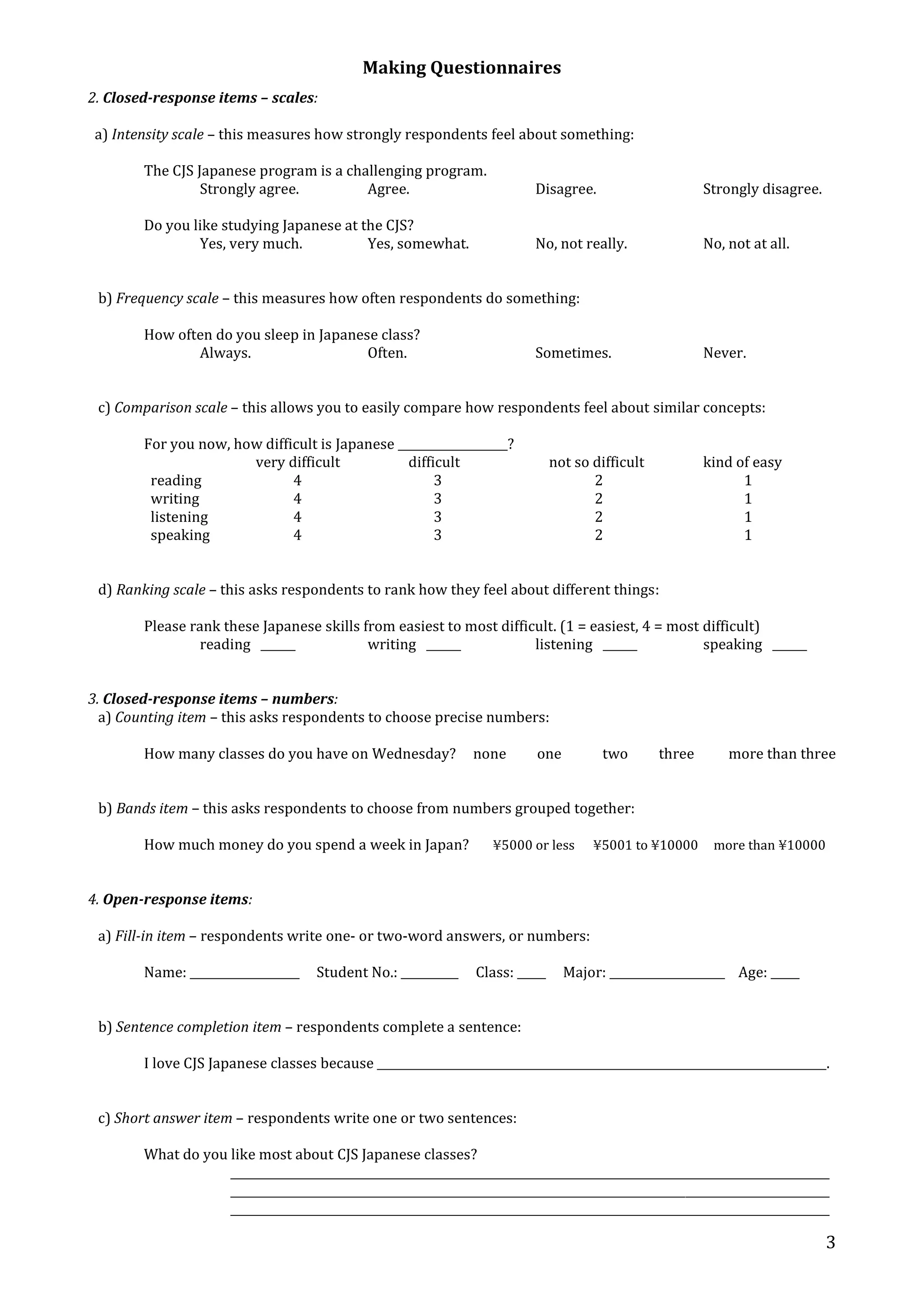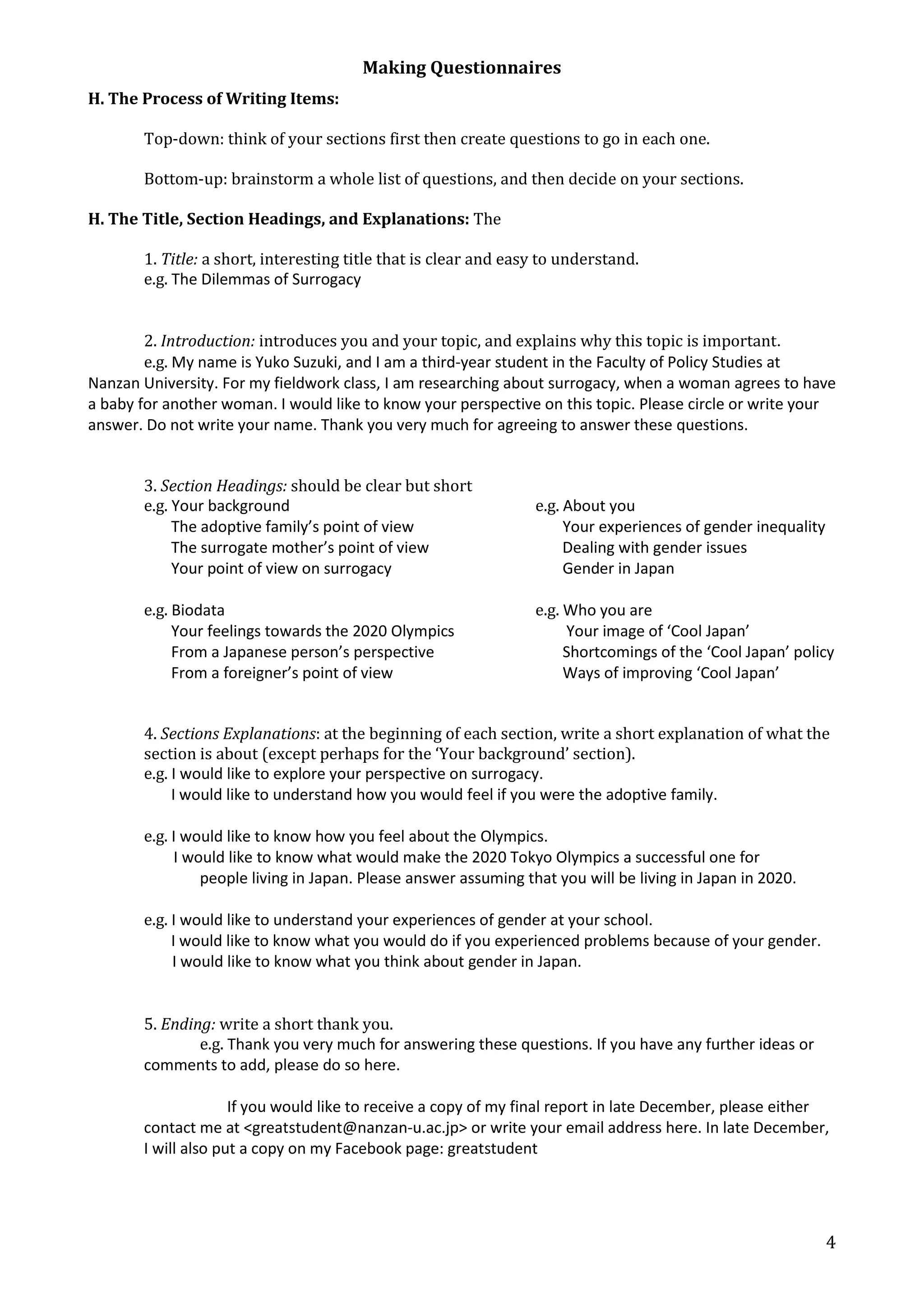This document provides guidance on creating an effective questionnaire, including defining the purpose and advantages, key sections, types of questions, and best practices for writing questions. The main sections of a questionnaire are the title, introduction, biodata questions, multiple topic sections with focused questions in each, and a conclusion. Effective questions are clear, short, ask about one topic, use simple language, and provide all possible answers. Closed-response questions like multiple choice, scales, and numbers are best for gathering standardized data, while open-response questions allow for unique answers. The goal is to design a questionnaire that gathers useful data to answer the research questions in a way that respondents understand and feel comfortable answering honestly.



